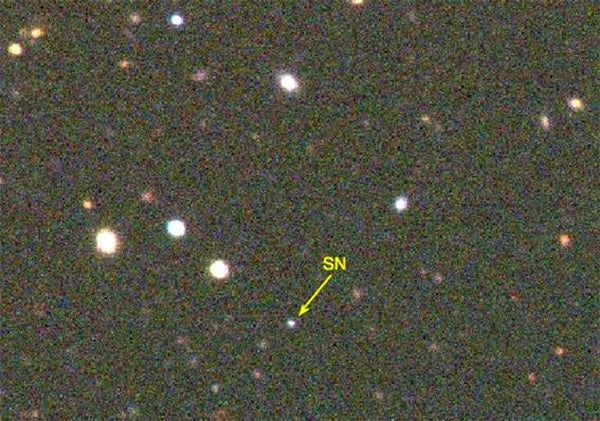Ten billion years ago, a big star went boom — and now astronomers have captured the ancient flash that may be the earliest supernova ever detected.
The supernova, according to a University of California Santa Cruz press release, is brighter than all of our galaxy’s stars combined. That brightness may be because of its special place in the history of our universe: a time called “cosmic high noon.”
The supernova, called DES15E2mlf, occurred in a galaxy that is more massive than previously observed host galaxies for superluminous supernovae. These events tend to happen in smaller, metal-poor galaxies with metal-poor stars — pristine objects in the early universe that have only undergone a few generations of stellar formation. Because its host galaxy exists at such an early time, however, even such a massive object could be relatively devoid of metals, setting the stage for a superluminous supernova. This new event confirms that supernovae were occurring at that time as well, indicating that early stars could accumulate enough mass to later destabilize themselves in a giant explosion more luminous than “normal” supernovae.
This, in turn, could tell us a lot about how galaxies form. Most galaxies at that time were not only less massive than those we see today, but they were also more compact. Understanding how massive stars form and die in all types of galaxies can also teach us about the history of our own Milky Way, which was once metal-poor as well.










